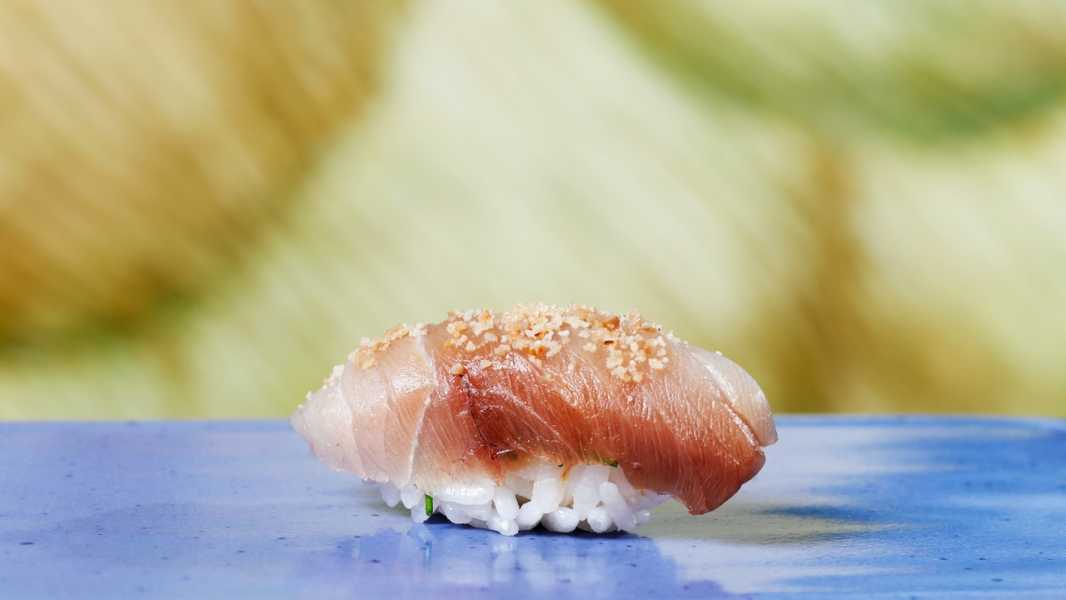
Save this storySave this storySave this storySave this storyYou’re reading the Food Scene newsletter, Helen Rosner’s guide to what, where, and how to eat. Sign up to receive it in your in-box.
Bar Miller, a three-month-old omakase counter in the East Village, is the creation of Jeff Miller, the chef and co-owner of the pioneering sustainable-sushi destination Rosella. The new spot, an eight-seat counter in a very tiny, gorgeously designed room, is more or less a spinoff of Rosella’s omakase program. (The parent restaurant is now entirely à la carte.) Miller designed his eponymous restaurant in conjunction with his business partner T.J. Provenzano, to showcase the expertise of James Dumapit, a veteran Rosella chef who forged his Japanese culinary skills at Austin’s famously excellent Uchiko. On a recent visit, Dumapit was manning the marbled-green sushi bar, assisted by a sous-chef and a puckish drinks manager. It was the early seating, and the mood was chill—three staffers, six diners, friendly crosstalk. I felt like we’d all be best friends by the time dessert rolled around.
Bar Miller
620 E. 6th St.
(Omakase $250.)
If you want to spend two hundred and fifty dollars per person on sushi omakase, there are plenty of options in New York, all trying to out-boast one another about the quality and rarity of ingredients flown in daily from fish markets on the other side of the world. What draws you to Bar Miller is, most likely, its recusal from that competition and the shameless carbon footprint it entails: as at Rosella, the restaurant prioritizes local fish and ingredients and avoids overfished species. (This selectivity extends to the beverage list, which is made up of entirely domestic wines, sakes, and ciders, mostly from New York State.) The shrimp is from South Carolina. The mackerel is from Virginia. The wasabi, however, comes all the way from Oregon—“We’ll take the L on that one,” Dumapit laughed; to his knowledge, the fiery root has never been successfully commercially cultivated on the East Coast.
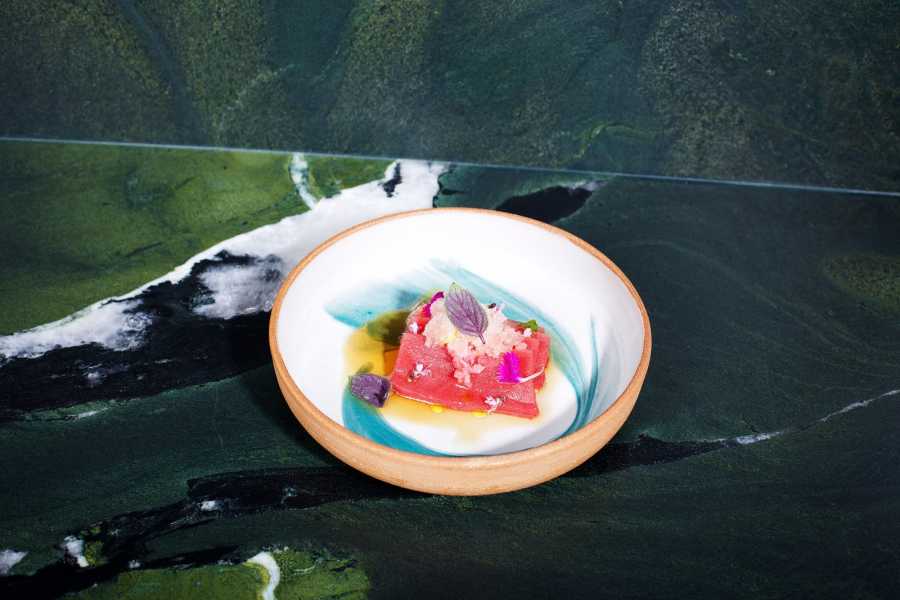
The tuna on the menu is the Western Atlantic bluefin, served here as ribbons of sashimi in a chilled broth.
A meal at Bar Miller begins without fanfare—after fiddling around a bit with spoons and tweezers, Dumapit placed small earthenware bowls on the ledge of the high counter, and invited us each to take one. Inside, in a clear broth streaked dramatically with an ink-black nori purée, was a small pile of pickled mussels, meaty and firm, arranged with slices of green strawberry, also pickled. The flavor was bright and clear, a sharp astringency scouring our palate for the meal to follow. Its fifteen-ish courses roughly followed a traditional omakase playbook: small introductory dishes, including a brilliant sunchoke-and-geoduck riff on clam chowder, leading to a main event of meticulously constructed, rapid-fire nigiri, and a gentle transition into a sweet finish of silky corn ice cream topped with a delicate portion of domestic sturgeon caviar.
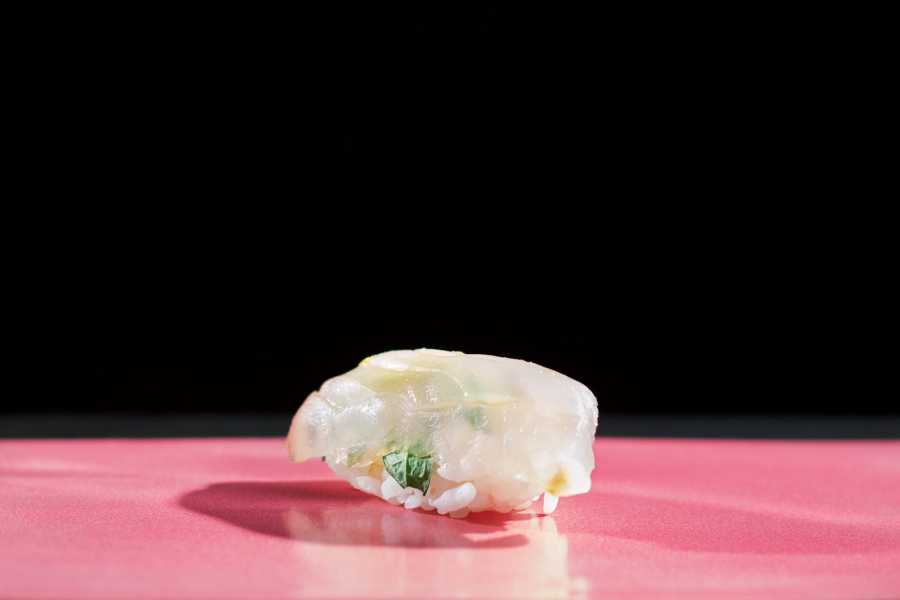
A piece of black-sea-bass nigiri.
Many restaurants have attempted to subvert the luxury-uber-alles principle that drives fine dining—no ingredient too rare, no cost too high—for example, by being plant-based, like the current incarnation of Eleven Madison Park, or by offering accessible pricing, like the East Village jewel-box HAGS, which offers a pay-what-you-can brunch. These amendments to the paradigm are restaurant criticism in the most literal sense, examining and challenging fine dining as both a form and a practice. Can you make a truly ultra-high-end meal without wagyu? Without langoustines? Without class hierarchy? Embedded in this sort of endeavor is the question of how much hay to make of the subversion itself, how to find the ideal balance between medium and message. A meal at Rosella is straightforward about proselytizing its sustainability goals; the restaurant understands that you’re there for the values as much as for the food. But Bar Miller seems unsure how to position itself: Is it a luxurious take on virtue, or a virtuous take on luxury?
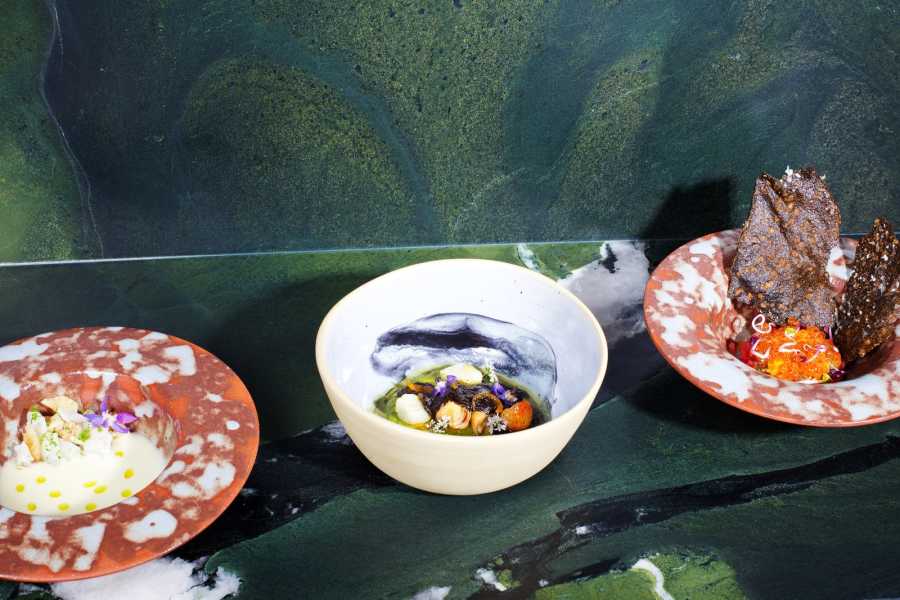
From the left: clam chowder with geoduck and sunchokes, pickled mussels, and bluefin on an ingenious “tostada” made of fish scraps.
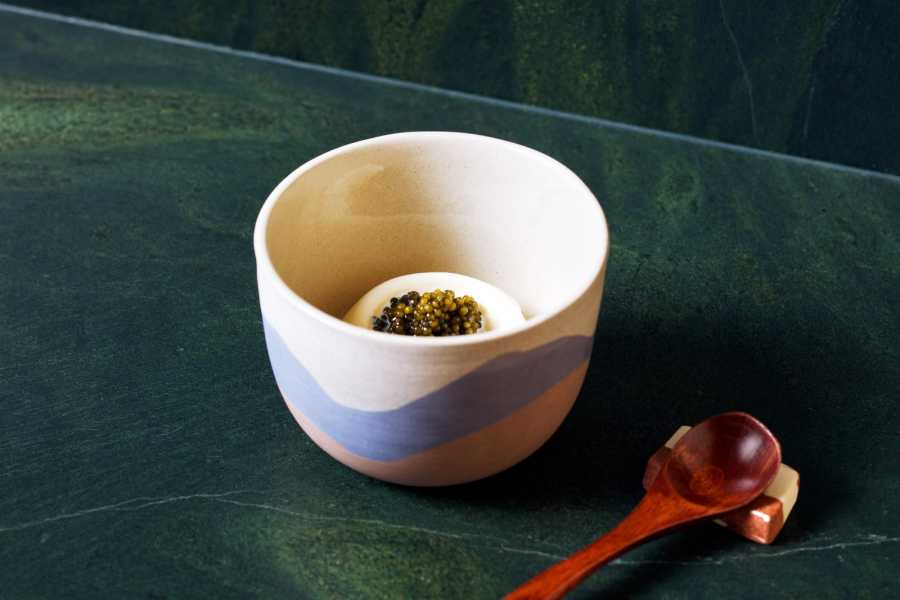
Corn ice cream with domestic sturgeon caviar.
This uncertainty, alas, lands the restaurant in a space that’s not enough of either. Dishes are presented with a description of their contents, but little storytelling about provenance, an approach that seems designed to allow the food to speak for itself. Yet it’s impossible for flavor and texture alone to be eloquent about sourcing, or provenance, or ecological intentionality. Though the fish in the nigiri courses was superlative—one piece in particular, a cut of gently soy-cured bluefish dusted with crisp sunflower-seed powder, was one of the most inspired bites I’ve had in a long time—the rice pillowing beneath each piece was bland and dry, congealed rather than sticky. This might have been less disappointing if the restaurant had made a bit more fanfare over the fact that it had been grown just a few miles up the river. (Who knew that there were rice paddies in the Hudson Valley?)
Helen, Help Me!
E-mail your questions about dining, eating, and anything food-related, and Helen may respond in a future newsletter.
Similarly, any sushi connoisseur knows that bluefin tuna, the headliner of most omakase meals, is the great guilty pleasure of the sea, brutally overfished at the cost of tremendous collateral damage to oceanic life. At Bar Miller, I counted four dishes starring bluefin: ribbons of sashimi in a chilled broth; two different cuts of fatty belly sashimi; and a tartare, atop an ingenious “tostada” made from scraps of all the evening’s fish which were dehydrated and held together with yucca starch. Surely, such an indulgent ingredient is at odds with the restaurant’s commitment to sustainability? It took a fellow-diner’s question to surface an answer—Dumapit explained that the fish was the Western Atlantic bluefin, not the overfished Pacific species, and that it was caught off the coast of Gloucester, Massachusetts—though I wondered if there was more to it. I would guess that the fish was line-caught, rather than trawled, which significantly minimizes ecosystem disruption, and that the preponderance of tuna dishes on the menu wasn’t a mere exercise in luxury but a way to insure that no part of the costly animal went to waste—this is pure speculation, of course, as we diners were never told. Not all tasting menus require extensive narration; if anything, narrative is overused in fancy restaurants, weighing down otherwise nimble culinary exercises with talk, talk, talk. But when the premise of your restaurant is that you’ve got a unique story to offer—a story that dictates nearly every element of the meal, a story that’s being told nearly nowhere else—it’s a missed opportunity not to focus more energy on the telling. ♦
Sourse: newyorker.com






